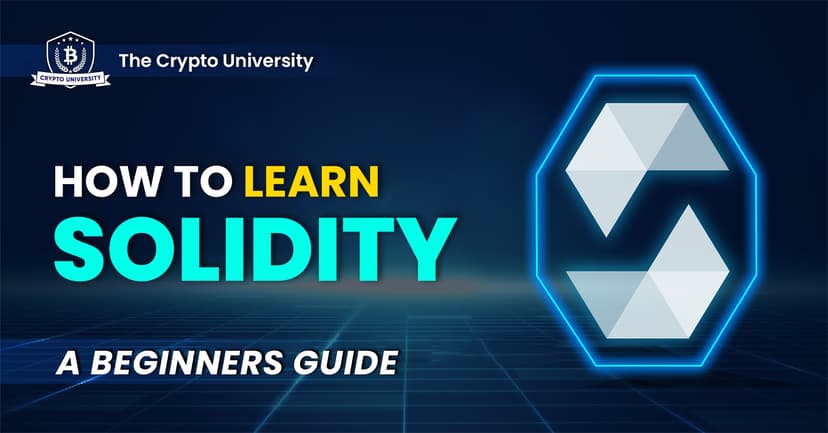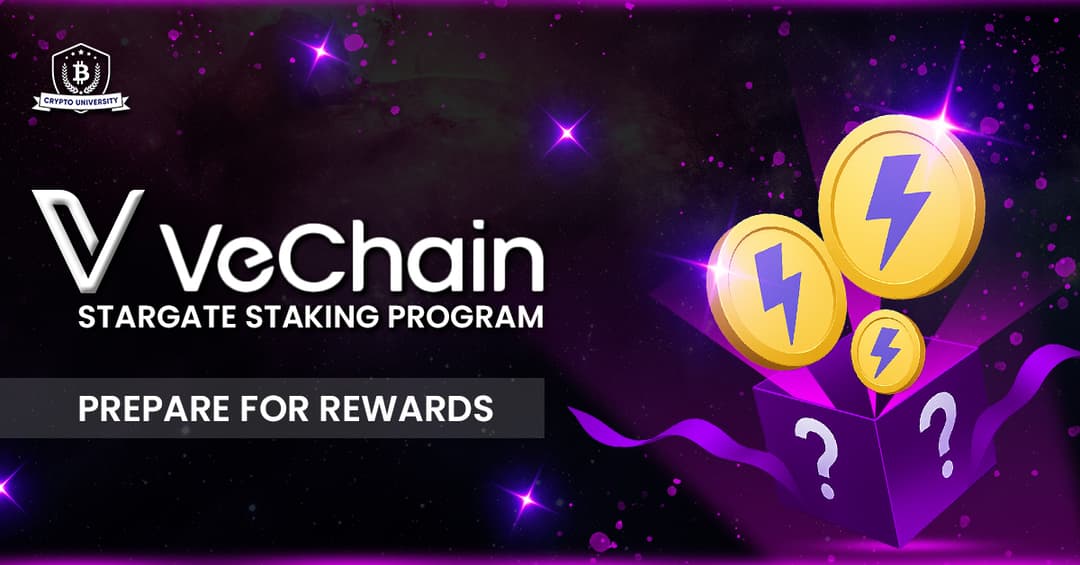No Adverts are available No Adverts are available
No Adverts are available
How To Learn Solidity: A Beginner's Guide
Mary Idomo • 11 May 2023
 No Adverts are available
No Adverts are availableAre you looking to start a career in blockchain development? One of the most in-demand skills in this field is the ability to write smart contracts using Solidity. If you're wondering how to learn Solidity, you've come to the right place. Solidity is a high-level programming language designed for creating decentralized applications (dApps) on the Ethereum blockchain. In this article, we'll cover everything you need to know about how to learn Solidity and become a proficient Solidity developer. So, let's get started.
What is Solidity?
Solidity is a programming language used to create smart contracts on the Ethereum blockchain. It was developed by the Ethereum Foundation in 2014 and is currently the most widely used language for creating smart contracts.
Smart contracts are self-executing contracts with the terms of the agreement between the individuals being directly written into lines of code. Once deployed on the Ethereum blockchain, these contracts can be executed automatically without the need for intermediaries.
Solidity is a high-level, contract oriented language that is similar to C++ and JavaScript. It was specifically designed to work with the Ethereum Virtual Machine (EVM) and is compiled into bytecode that can be executed on the EVM.
The language has several features that make it ideal for creating smart contracts, such as built-in data types, support for inheritance, and exception handling. It also has a strong focus on security, with features such as input validation and protection against common attack vectors.
Solidity is constantly evolving, with new features and improvements being added regularly. This ensures that developers can create sophisticated and secure smart contracts that can execute complex operations.
Why Learn Solidity?
The demand for Solidity developers is on the rise. As more businesses and individuals recognize the potential of blockchain technology, the need for skilled Solidity developers continues to grow. Learning Solidity positions you for exciting job opportunities, particularly in the blockchain and cryptocurrency industry.
By learning Solidity, you can become a valuable asset to blockchain development teams, startup companies, and investors who want to leverage the power of blockchain technology.
Moreover, learning Solidity can be fun and creatively rewarding. With its unique syntax and focus on smart contracts, Solidity offers a refreshing break from traditional programming languages. You can use your creativity to build exciting projects that solve real-world problems.
Solidity is also relatively easy to learn for those with programming experience, and there are many resources available on how to learn Solidity.
Furthermore, Solidity is a statically typed language to learn for improving your programming skills. By learning Solidity, you can gain a better understanding of programming concepts like object-oriented programming and data structures. This knowledge can help you become a better programmer and can be applied to other programming languages as well.
Prerequisites for Learning Solidity
To learn Solidity, there are a few prerequisites that you need to have. Having these prerequisites will help you learn Solidity effectively.
Firstly, having a basic knowledge of Blockchain technology is crucial. You should understand the concepts of decentralization, immutability, and smart contracts. This will help you understand the context in which Solidity is used and how it fits into the overall blockchain ecosystem.
Secondly, programming skills are a must. While Solidity is similar to other programming languages, it has its own unique syntax and features. Knowing a programming language such as C++, Python, or JavaScript will make it easier to understand Solidity's structure and logic.
In addition, it's essential to be familiar with Ethereum and its ecosystem. Ethereum is the most widely used blockchain for creating decentralized applications, and Solidity is the language used to write smart contracts on the Ethereum network. Therefore you need to have a good understanding of the Ethereum ecosystem, including Ethereum's architecture, the Ethereum Virtual Machine (EVM), and how to deploy smart contracts on the Ethereum network.
Basic Solidity Programming Concepts
Here are some of the fundamental Solidity programming concepts that you'll need to master to become a proficient Solidity developer:
Data Types and Variables: In Solidity, variables can be of different data types such as integers, booleans, and strings. You need to understand how to declare and initialize variables and how to manipulate them.
Functions and Control Structures: Solidity has a variety of functions for performing specific tasks. You need to know how to write functions and how to use control structures like if-else statements and loops to control the flow of your code.
Contracts and Deployment: Contracts are the fundamental building blocks of decentralized applications on the Ethereum blockchain. You need to understand how to write contracts and how to deploy them.
Inheritance: Inheritance is a programming concept in which one contract can inherit properties and methods from another contract. You can use inheritance to simplify your code and reuse existing functionality.
Events: Events are a way for your contracts to communicate with the outside world. You can use events to notify users of certain actions or to track changes in your contract.
Modifiers: Modifiers are a way to simplify your code by applying common functionality to multiple functions. You can use modifiers to check conditions before executing a function or to add additional functionality to a function.
Libraries: Libraries are a way to reuse code across multiple contracts. You can use libraries to define common functionality and to reduce the size of your contracts.
Error Handling: Error handling is an important concept in Solidity. You need to know how to handle errors that may occur during the execution of your contract and how to provide meaningful error messages to users.
By understanding these Solidity programming concepts, you'll be well on your way to becoming a proficient Solidity developer and building decentralized applications on the Ethereum blockchain.
Key Solidity resources to learn Solidity
If you're interested in how to learn Solidity, there are several resources available to help you get started. Here are some key Solidity resources to consider:
Solidity Documentation
The official Solidity documentation is an excellent starting point for learning Solidity. It provides a comprehensive guide to the Solidity language, including syntax, data types, control structures, and more. It also includes several examples and best practices for writing Solidity code.
Ethereum Foundation
The Ethereum Foundation is a non-profit organization that supports the development of the Ethereum platform and related technologies. It offers several resources for learning Solidity, including documentation, tutorials, and a developer forum.
Solidity Online Courses
Several online platforms, such as Udemy, Coursera, and edX, offer Solidity courses for beginners. These courses cover the basics of Solidity programming, including smart contracts, data types, functions, and more.
Solidity Books
There are several Solidity books available for purchase, such as "Solidity Programming Essentials" and "Building Blockchain Projects". These books provide a comprehensive guide to Solidity programming, including practical examples, best practices, and real-world use cases.
Ethereum Developer Community
The Ethereum developer community is an excellent resource for learning Solidity. It includes several forums, such as the Ethereum Stack Exchange and the Ethereum Community Forum, where you can ask questions, share ideas, and connect with other Solidity developers.
Solidity Code Repositories
Several open-source Solidity code repositories, such as OpenZeppelin and ConsenSys, provide code examples and libraries that can be used as a starting point for Solidity development.
Solidity Development Tools and Frameworks for Beginners
Writing smart contracts requires a variety of tools and frameworks to make the development process more efficient and secure. Here are six Solidity development tools and frameworks suitable for beginners:
Remix
Remix is a web-based Solidity development environment that offers an intuitive interface for writing and testing smart contracts. It includes a Solidity compiler, a code editor, and a debugger. With Remix, developers can write, deploy, and test their smart contracts without the need for a local development environment.
Truffle
Truffle is a popular development framework for building Ethereum-based applications. It offers a suite of tools for managing smart contracts, such as contract creation, migration, and testing. Truffle also provides an extensive library of smart contract development best practices.
Ganache
Ganache is a personal blockchain for Ethereum development, designed for testing and deploying smart contracts in a local environment. It provides a user-friendly interface for developers to manage blockchain networks and monitor transactions. Ganache allows developers to simulate a live blockchain environment without needing to deploy contracts to the main network.
Hardhat
Hardhat is a development environment designed to help developers build, test, and deploy smart contracts on Ethereum. It offers a range of features including a Solidity compiler, a testing framework, and a debugging tool. Hardhat is also compatible with other Ethereum development tools like Remix and Truffle.
Web3.js
Web3.js is a JavaScript library that allows developers to interact with Ethereum nodes using HTTP or WebSocket connections. It provides a set of APIs for sending transactions, managing accounts, and querying blockchain data. Web3.js also includes support for Smart Contract interaction, making it easier for developers to create DApps and other Ethereum-based applications.
Infura
Infura is a developer platform that provides a reliable and scalable way to access Ethereum networks without the need for running a node. It offers a set of APIs that allow developers to interact with the Ethereum network using standard JSON-RPC calls. Infura simplifies the process of deploying and managing smart contracts on the Ethereum network.
Solidity Best Practices
Writing Solidity code is not just about creating working code, but also about writing secure, maintainable, and efficient code. In this regard, it is important to follow best practices when writing Solidity code to ensure that your smart contracts are reliable and secure. Here are six key Solidity best practices:
Code Readability
Readable code is easier to maintain and debug. When writing code in Solidity, it is important to make it easy to understand by using clear and concise naming conventions for variables, functions, and events. Additionally, you should write comments to explain the code and its purpose.
Security Considerations
Smart contracts are often targeted by hackers due to their immutable nature. It is important to write secure code to avoid vulnerabilities that can be exploited. Use well-audited libraries, avoid hardcoded addresses and passwords, and use secure design patterns like the 'fail early, fail loud' principle.
Gas Optimization
The Ethereum network charges fees for implementing smart contracts called gas fees. To minimize gas costs, write efficient code by optimizing variables and code logic. For instance, use uint256 instead of uint8 for variables that may grow in size. You should also minimize storage variables, use internal functions instead of external functions, and avoid loops where possible.
Use of Modifiers
Modifiers allow developers to add custom pre- and post-conditions to Solidity functions, making the code more secure and readable. Modifiers can also simplify the code by removing repetitive checks. Use modifiers for code consistency, reduce code redundancy, and to add security checks.
Unit Testing
Unit testing is a crucial aspect of software development, and Solidity is no exception. Test-driven development allows you to catch errors and vulnerabilities early in the development process. Write unit tests to verify the expected behavior of smart contracts, test boundary conditions, and ensure that code changes don't break existing functionality.
Code Auditing
Finally, it is advisable to have your code audited by a third party or an expert in Solidity development. Auditing can uncover vulnerabilities that might have been missed in code reviews or testing. It can also help to verify that your code follows best practices and standards.
Conclusion
Learning Solidity concepts is an important step for anyone interested in building decentralized applications on the Ethereum blockchain. Through this How to Learn Solidity beginner's guide, we have explored the basics of Solidity, including its prerequisites, tools and resources, programming concepts, and best practices.
To get started with Solidity, you will need to have a solid foundation in programming and a basic understanding of blockchain technology. With the help of the resources mentioned in this guide, you can start your journey towards becoming a proficient Solidity developer and contributing to the decentralized world.
If yyou desire to build a solid foundation in web3 and crypto knowledge, join our crypto university membership today.
Share Posts
Copy Link
cryptouniversity.networkblog/how-to...

Ambrose Okolo • 30 May 2025
VeChain’s StarGate Staking Program: Unlocking Rewards by July 1, 2025
VeChain’s StarGate Staking Program launches July 1, 2025, offering massive VTHO rewards and lower staking barriers. It’s your chance to earn, support decentralization, and join blockchain’s next big leap.

